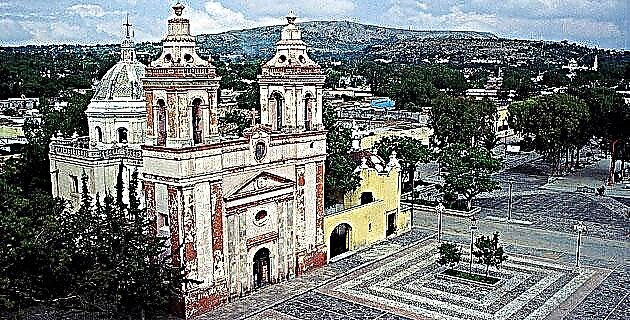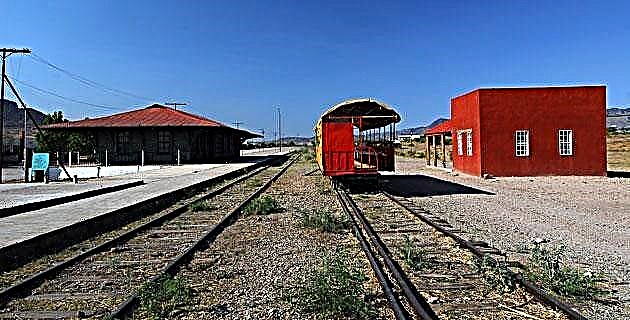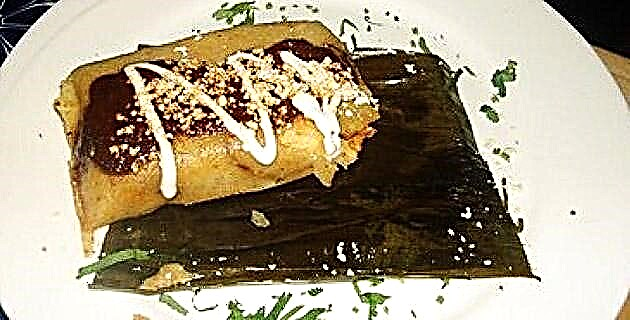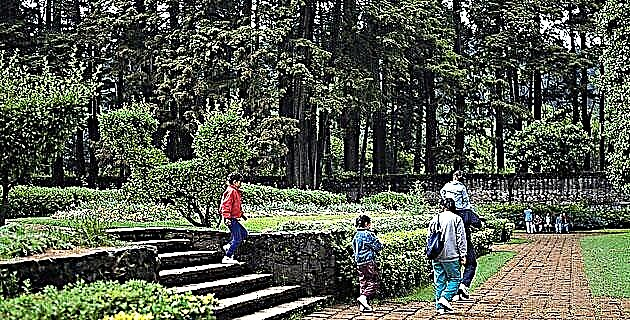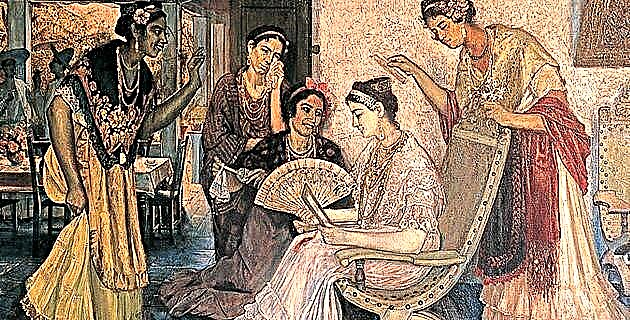
In Chicontepec and Álamo Temapache, populations of the Huasteca Veracruzana, very old customs are preserved and a special mystical idiosyncrasy is maintained.
The feminine attire has lost its roots, but maintains important elements of its identity.
The feminine attire in Mesoamerica was unique in the world, comparable in its splendor to the Greek, Roman or Egyptian, although possibly more colorful, since the context of the great pre-Columbian cultures was lavish in polychromy and had a multitude of nuances, which influenced the clothing of its inhabitants. The Spanish conquerors were the first foreign witnesses to this multicolored mosaic, reflected in the personal grooming of Mesoamerican men and women. Throughout the Aztec empire, women haughtily wore beautiful huipiles with a square neck and embroidery, straight cut, long and loose, with petticoats or skirts that were wrapped around the body and fixed with an embroidered girdle. For their part, the women of the Totonacapan region wore the quechquémel, a diamond-shaped garment with an opening on the head and that covered the chest, back and part of the indigenous chincuete or skirt. These garments were used with some changes by all the regions of pre-Columbian Mexico, and made on the backstrap loom with fine cotton fabrics; those used in festivities stood out for their colors and embroidery, and they dyed the fabrics with natural dyes obtained from insects, plants and shells.
From the northern border to the southern border of our country, indigenous women have had a preference for intense colors in clothing and in their grooming accessories. Necklaces, earrings, bracelets, dental inlays, ribbons and stamens with which they adorn their great hairstyles, are indicative of the enormous wealth in their clothing, which dates back to the most ancient times among the Nahuas, Totonacs, Mayans, Huastecs, to name a few. of the ethnic groups that inhabit these lands.
Just as a Tarahumara, Mayan or Nahua woman from Cuetzalan is recognized by her way of dressing, it is possible to identify a Nahua woman originally from Chicontepec; Although their clothes show a great Spanish influence, their main characteristic is the trace of syncretism, a culture that reflects the European way of dressing, amalgamated with the great colors in their embroidery, the use of numerous necklaces and amulets, earrings made of gold and silver, ribbons and multicolored stamens that preserve native customs, clothing and language.
Almost all women over 50 gracefully wear an outfit that recognizes and makes them proud, but may not last more than 40 years. Changes have already occurred in the last 25 to 30 years; In the book The indigenous costume in Mexico, by Teresa Castelló and Carlota Mapelli, published by the National Institute of Anthropology and History (1965), the use of a costume that is no longer seen in the town of Chicontepec is mentioned.
The European cut blouse called ikoto is made of blanket, cotton or poplin, it has short sleeves and a small square neckline, which has yarn woven in blue or red color around it, it is made in two types: the one with two stripes (one on the front , at the height of the bust, and another from behind), both in cross stitch called itenkoayo tlapoali, have small geometric or floral drawings of very bright colors, three fingers wide on a needle-like upper piece called kechtlamitl; This piece is attached to the lower part from the front by small folds or xolochtik, finished off in a wavy and wide shape; the other blouse is characterized by having squared fabric on the upper part, decorated with cross-stitch embroidery called ixketla tlapoali, both on the sleeves, front and back, representing figures of animals, flowers or frets of many colors and that joins the lower part in the same way as the previous one; both types of blouse are tucked in front of the skirt and the back is loose.
According to the taste and purchasing power of each woman, the skirt reaches the ankle and has a waistband with drawstrings that allow it to be attached to the waist; in the middle part it has lace ornaments and 5 cm ribbons of various colors called ikuetlatso; 4 or 5 tucks or tlapopostektli are placed on the edge, with a strip of the same cloth but with folds called itenola, which breaks the continuity of it; A waist apron or iixpantsaja is worn over the skirt, which reaches below the knee and is made of Scottish-type polyester fabric, much appreciated by women.
Most who dress in this way, knit their blouses with a hook or embroider them with a needle and sew their skirts or have them sewn by machine. The ancient backstrap loom has been forgotten, and except on rare occasions it is used by women over 70 years of age, who make cotton napkins, much appreciated as a gift in traditional wedding ceremonies. The looms that still exist remain attached to one end of the door of the house and the other to the waist of the person who works it, by means of the kuitlapamitl, as a mecapal. The weavers themselves sometimes cultivate the bush and carry out the process of making the cotton thread, making their own spindle or malacatl, made up of two parts: a stick of approximately 30 cm and a hemispherical piece of clay that is threaded into it. with the round part down, as a counterweight. The complete spindle is placed in a small container or chaualkaxitl. The loom is made up of loose pieces of wood, which have different functions.
On a normal day in Chicontepec, the daily activity of women begins with the appearance of the first solar flares, when the sounds of the grinding of corn are heard in the metate. Other women carry water from the wells and take the opportunity to bathe and wash clothes, while others carry out this same activity in the area of the springs. They return to their huts walking barefoot, as it has been used since pre-Hispanic times, carrying with me a little boy full of clothes or a bucket with water on their heads, which they maintain with great balance despite the steepness of the slope, without let any drop spill.
In the region many ancient ceremonies are celebrated, among which are: tlamana or tender corn offering, and the so-called tlakakauase, performed when two young people have decided to marry. Then the groom brings many gifts to the girl's parents. During these visits the woman wears her best clothes and braids her hair with narrow ribbons of yarn of various colors, which protrude about eight inches from the tip of the hair; the neck is covered with many necklaces made of hollow glass beads, or of other brightly colored material, medals, coins; She wears gold or silver earrings in the shape of a half moon, carved in the town of “Cerro”. All this embellishment reminiscent of the greatness of ancient times, which still subsists in the Mexican indigenous soul, which has always appreciated the dazzling colors, ornaments, jewels and the showiness of its clothing.
IF YOU GO TO CHICONTEPEC
Take road no. 130, which passes through Tulancingo, Huauchinango, Xicotepec de Juárez and Poza Rica. In the town of Tihuatlán, take the road that passes through the municipal seat called Álamo Temapache, and about 3 km you will find the deviation to Ixhuatlán de Madero and Chicontepec, where you arrive after passing the towns of Lomas de Vinazco, Llano de In the middle, Colatlán and Benito Juárez. They are approximately 380 km long and all services are available.
Source: Unknown Mexico No. 300 / February 2002

